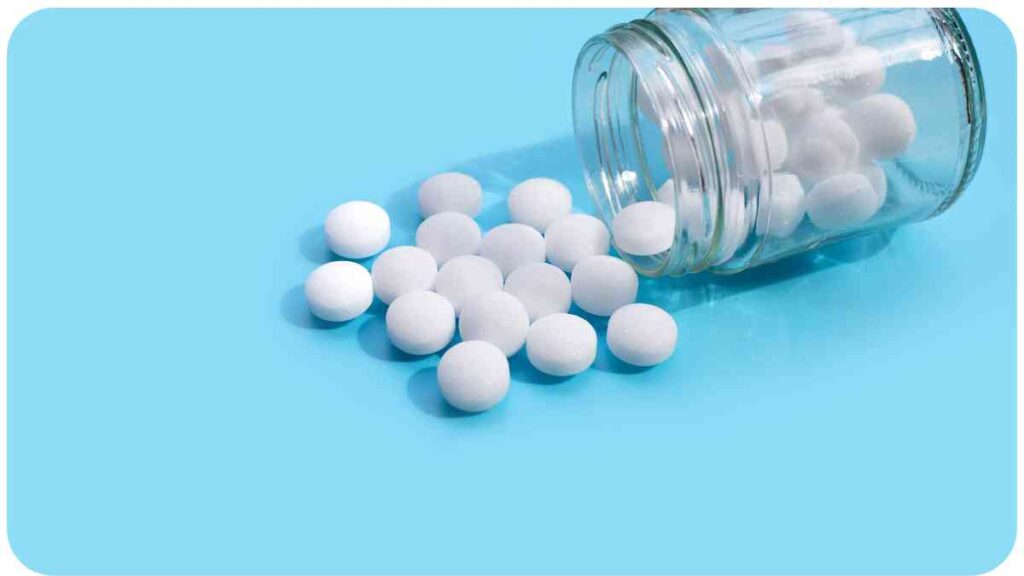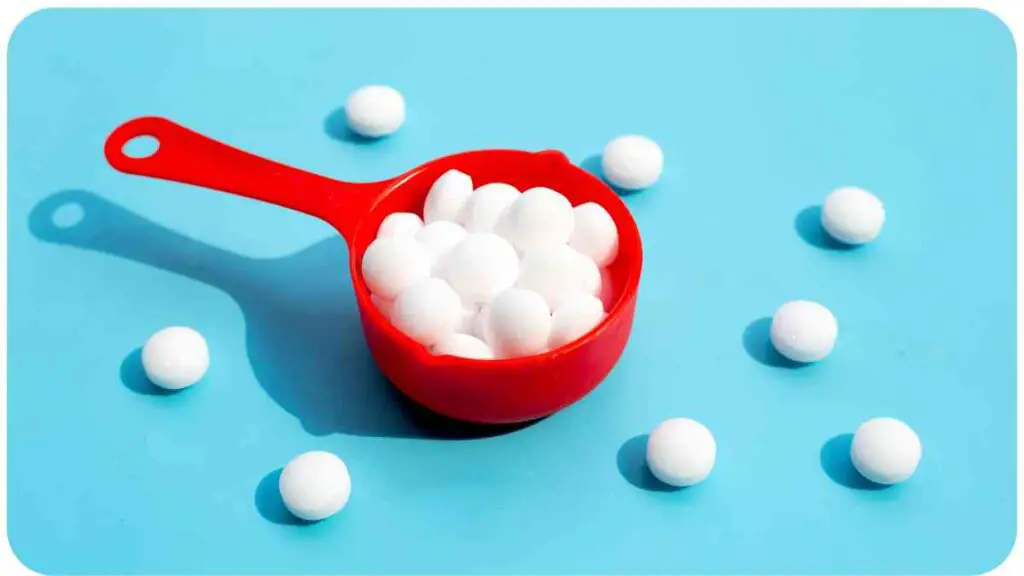Moths – those pesky winged creatures that can turn your favorite clothing items into a feast. If you’re here, it’s likely because you’ve tried traditional mothballs, only to discover that they aren’t as effective as you hoped. Fear not, for in this article, we will delve into the world of moth problems, explore the limitations of mothballs, and present alternative solutions that work.
With my years of experience in dealing with these textile-hungry insects, I’ll guide you through the maze of moth repellents and provide you with expert advice to keep your belongings moth-free.
| Key Takeaways |
|---|
| Effective moth prevention doesn’t have to rely on traditional mothballs with health concerns. |
| Natural alternatives like lavender, rosemary, and cedarwood offer safe and eco-friendly solutions. |
| Routine maintenance and combining methods enhance the effectiveness of your moth-repelling strategy. |
| Understanding moth behavior is crucial for targeted prevention. |
| Sustainable alternatives protect your belongings without harming the environment. |
2. Understanding the Moth Problem
Before we dive into alternative solutions, let’s understand the enemy – the moth. Moths, particularly clothes moths, can wreak havoc on your wardrobe and other cherished items. They thrive on natural fibers like wool, silk, and even fur, making your cozy sweaters and elegant suits vulnerable to their destructive appetites.
Moths are especially active in dark, undisturbed areas, which is why your closet often becomes ground zero for their invasion. Their larvae, not the adults you typically see fluttering around, are the real culprits. These tiny, wriggling pests are the ones responsible for chewing holes in your clothes.
Now, let’s explore why traditional mothballs might not be the miracle solution you hoped for.
If you’re wondering why your ant traps don’t seem effective, you can learn from our guide on common ant trap mistakes. Discover how to enhance your ant control strategy
3. The Limitations of Traditional Mothballs

Traditional mothballs have been a go-to solution for moth problems for decades, but they come with their fair share of limitations.
3.1. Chemical Concerns
Traditional mothballs primarily contain naphthalene or paradichlorobenzene, chemicals that release toxic fumes to repel moths. While they can be effective in the short term, these chemicals raise concerns for several reasons:
- Health Risks: Prolonged exposure to naphthalene or paradichlorobenzene can lead to health issues, including respiratory problems and irritation.
- Environmental Impact: The release of these chemicals into your home’s air can harm the environment and pets.
- Unpleasant Odor: The strong, lingering smell of mothballs can be off-putting.
3.2. Short-Term Effectiveness
Mothballs often provide only temporary relief. They may deter moths for a while, but their effectiveness diminishes over time as moths become accustomed to the scent. Furthermore, once you remove mothballs, the problem can return with a vengeance.
Ensure the safety of your kids and pets with alternatives to conventional insect repellents. Explore our insights on safe insect repellents for families and furry friends
Traditional Mothball Chemicals and Concerns
Here’s a table summarizing the chemicals commonly found in traditional mothballs and their associated concerns:
| Chemical | Concerns |
| Naphthalene | – Health risks |
| – Environmental impact | |
| – Unpleasant odor | |
| Paradichlorobenzene | – Health risks |
| – Environmental impact | |
| – Unpleasant odor |
Now that we’ve covered the limitations of traditional mothballs, let’s explore alternative solutions that can effectively keep moths at bay without the drawbacks.
4. Alternative Moth-Repelling Solutions

Traditional mothballs may have lost their charm, but fear not; there are alternative solutions that are not only effective but also safe for your health and the environment. Let’s explore these options in detail.
4.1. Natural Moth Repellents
One of the safest and eco-friendly options is to use natural moth repellents. These include herbs and essential oils that moths find unpleasant, such as lavender, rosemary, and cloves. You can create sachets or sprays with these natural ingredients to protect your clothing.
4.2. Cedarwood Products
Cedarwood has long been known for its moth-repelling properties. Cedarwood closets, hangers, and cedarwood oil can be highly effective in keeping moths away. The pleasant aroma of cedarwood is a bonus!
4.3. Vacuum Sealing
Vacuum sealing your clothing is a practical way to protect them from moths. By removing the air and sealing your items in plastic bags, you create an environment moths can’t thrive in.
Are mosquitoes becoming a nuisance? Recognize the early signs of mosquito infestations to take action promptly and enjoy a mosquito-free environment.
4.4. Professional Pest Control
When the infestation is severe and DIY methods don’t cut it, it’s time to call in the professionals. Pest control experts have the knowledge and tools to eliminate moths effectively.
Natural Moth Repellents and Their Benefits
Let’s dive deeper into the benefits of using natural moth repellents with a table:
| Natural Moth Repellent | Benefits |
| Lavender | – Pleasant scent |
| – Safe for health and environment | |
| Rosemary | – Natural and chemical-free |
| – Effective against moths | |
| Cloves | – Strong aroma moths dislike |
| – Easy to use in sachets or sprays |
Now that we’ve explored some alternative solutions, let’s discuss how to implement them effectively.
5. How to Use Alternative Moth-Repelling Methods
Knowing about alternative moth-repelling methods is essential, but using them correctly is equally important to achieve the best results. Let’s delve into the details of how to make the most of these alternatives.
Stay ahead of potential cockroach infestations by learning about the early warning signs that your home may be harboring these unwelcome guests.
5.1. Natural Moth Repellent Sachets
Creating natural moth repellent sachets is a simple yet effective way to protect your clothes. Here’s how you can do it:
- Gather Your Ingredients: You’ll need dried lavender, rosemary, and cloves. You can find these at your local grocery or online.
- Prepare Small Fabric Sachets: Cut small squares of breathable fabric, like muslin or cotton, and sew them into small sachets, leaving an opening at the top.
- Fill the Sachets: Mix the dried herbs and cloves together and fill each sachet with the mixture. Ensure the sachets are not overly stuffed to allow air circulation.
- Hang or Place Them: Hang these sachets in your closet, place them in drawers, or tuck them between clothes. The scent will naturally repel moths.
5.2. Cedarwood Closets
Cedarwood products are a convenient way to protect your clothes. Follow these steps to use cedarwood effectively:
- Invest in Cedarwood Items: Purchase cedarwood hangers, blocks, or chips. You can even buy cedarwood sachets if you prefer a portable option.
- Place Them Strategically: Hang cedarwood hangers in your closet or place cedarwood blocks or sachets in drawers, storage boxes, and other clothing storage areas.
- Renew the Scent: Periodically, lightly sand or scrape the cedarwood to renew its moth-repelling scent.
5.3. Proper Storage Techniques
Storing your clothing correctly can go a long way in moth prevention. Here’s what you need to know:
- Clean Clothes Thoroughly: Ensure your clothes are clean and free of food stains or body oils before storing them. Moths are attracted to soiled items.
- Use Airtight Containers: For long-term storage, consider using airtight containers or vacuum-sealed bags to keep moths out.
- Rotate Your Wardrobe: Don’t let your clothes sit unused for extended periods. Regularly wear and wash them to discourage moth infestations.
5.4. When to Call the Professionals
While DIY methods are effective for mild infestations, severe cases may require professional pest control. Here are signs that it’s time to call in the experts:
- Widespread Damage: If your clothes show extensive moth damage, professional help is essential.
- Recurring Infestations: If moths keep coming back despite your efforts, there may be a hidden infestation that requires professional detection and treatment.
- Increased Moth Sightings: A sudden increase in moth sightings in your home, especially in daytime, can indicate a growing problem.
Now that you know how to use these alternative methods, let’s explore some personal experiences and expert insights to add depth to our knowledge.
Don’t let termites wreak havoc on your furniture. Discover how to identify and eliminate termites before they cause extensive damage to your wooden possessions
6. Personal Experiences and Expert Insights
As someone who has dealt with moth problems professionally, I’ve had my fair share of successes and challenges. Let me share some of these experiences and insights with you.
6.1. The Success of Lavender Sachets
One of the most rewarding experiences in my battle against moths has been the use of lavender sachets. Not only do they add a pleasant fragrance to my closet, but they’ve also effectively kept moths at bay. The lavender scent is a natural deterrent, and it’s safe for both my health and the environment.
6.2. Cedarwood Closets: A Long-Term Solution
Cedarwood has been my trusted ally in the fight against moths for years. Cedarwood closets and hangers not only repel moths but also add a touch of elegance to my wardrobe storage. The best part is that cedarwood doesn’t lose its effectiveness over time, making it a long-term solution.
6.3. The Frustration of Mothball Failure
I’ve had my fair share of frustration with traditional mothballs. Their strong odor and potential health risks made me seek alternative solutions. It’s disheartening when you think you’ve solved the problem, only for it to resurface.
6.4. The Importance of Routine Maintenance
One key lesson I’ve learned is the importance of routine maintenance. Even with effective alternatives, you must regularly check, replace, or refresh them to maintain their moth-repelling power. Neglecting this can lead to unexpected infestations.
Now that you’ve heard about my experiences, let’s move on to some practical tips for moth-proofing your home.
7. Moth-Proofing Your Home: Tips and Tricks
Prevention is the best defense against moths. Here are some practical tips and tricks to keep your home moth-free:
7.1. Maintaining a Clean Environment
A clean home is less attractive to moths. Regularly vacuum and dust your closets and storage areas to remove potential moth attractants like crumbs and dust.
7.2. Regular Clothing Inspection
Periodically inspect your clothing for signs of moths or damage. Catching the problem early can prevent extensive damage.
7.3. Proper Storage Practices
Follow proper storage practices like using airtight containers, keeping your closet well-ventilated, and avoiding overcrowding.
7.4. Using a Variety of Methods
Don’t rely on a single method. Combining natural repellents, cedarwood products, and proper storage techniques can create a formidable defense against moths.
With these tips, you’re well on your way to keeping moths out of your life. But before we wrap up, let’s take a closer look at moth behavior to better understand how to outsmart them.
8. Understanding Moth Behavior
Understanding your enemy is crucial in any battle, and moths are no exception. Let’s explore the fascinating world of moth behavior to gain insights into how to protect your belongings effectively.
8.1. The Moth Life Cycle
Moths go through a life cycle consisting of four stages: egg, larva (caterpillar), pupa, and adult. It’s the larval stage that causes the most damage to your clothing. Here’s a brief overview:
- Egg: Moths lay their eggs on or near suitable food sources for their larvae. In your home, this often means your clothing and textiles.
- Larva (Caterpillar): The hatched larva are the culprits behind fabric damage. They feed on natural fibers, leaving behind holes and damage.
- Pupa: After feeding, the larva spin silken cocoons and undergo metamorphosis within. They emerge as adult moths.
- Adult: Adult moths don’t eat your clothes. Instead, their sole purpose is to reproduce, laying eggs to start the cycle anew.
Understanding this life cycle can help you target your prevention methods effectively, particularly when it comes to protecting your clothing from the damaging caterpillars.
8.2. Moth-Attracting Materials
Moths are drawn to specific materials and conditions. Knowing what they’re attracted to can help you make your home less appealing to these textile-eating pests. Some factors that attract moths include:
- Natural Fibers: Moths prefer natural fibers like wool, silk, cashmere, and fur. These materials provide both food and suitable conditions for their larvae.
- Dark, Undisturbed Areas: Moths are nocturnal and thrive in dark, quiet spaces. Closets and drawers are ideal hiding spots.
Now that you understand moth behavior, you can tailor your moth-proofing strategies to disrupt their life cycle and create an environment they find unattractive.
Environmental Impact of Mothballs and Sustainable Alternatives
9. The Environmental Impact of Mothballs
While traditional mothballs have been a go-to solution for many, their environmental impact cannot be ignored. Let’s examine the negative consequences of using mothballs and explore more sustainable alternatives.
9.1. Harmful Chemicals
As mentioned earlier, traditional mothballs contain chemicals like naphthalene and paradichlorobenzene, which can pose health risks and harm the environment when released into the air or disposed of improperly.
9.2. Sustainable Alternatives
Fortunately, there are sustainable alternatives that not only protect your belongings but also minimize harm to the environment. Natural moth repellents, cedarwood products, and vacuum sealing are eco-friendly choices that effectively keep moths away without the adverse effects of traditional mothballs.
Now that we’ve covered the environmental aspect, let’s wrap up this comprehensive guide with a conclusion.
Conclusion
In the battle against moths, it’s clear that traditional mothballs are no longer the best solution. They come with health concerns, environmental impact, and limited effectiveness. However, armed with the knowledge and alternatives provided in this article, you can protect your clothing and belongings effectively.
From natural moth repellents like lavender sachets to the time-tested cedarwood solutions and proper storage practices, there are plenty of alternative methods to consider. By understanding moth behavior and implementing a combination of these strategies, you can create a formidable defense against these textile-devouring pests.
Remember, prevention is key, and routine maintenance of your chosen moth-repelling methods is crucial for long-term success. Regularly inspect your clothing, keep your storage areas clean, and consider using a variety of techniques to outsmart moths.
By making informed choices and adopting sustainable alternatives, you not only safeguard your cherished possessions but also contribute to a healthier environment. Say goodbye to mothball headaches and hello to effective, eco-friendly moth-proofing methods.
Thank you for joining us on this journey to understand why traditional mothballs might not be working for you and exploring alternative solutions that truly make a difference.
Further Reading
- The Art of Prevention: Mothball Alternatives: Explore an in-depth guide on alternatives to traditional mothballs, including natural and eco-friendly options for effective moth prevention.
- Mothball Regulation and Safety: Learn about the regulations and safety considerations associated with mothballs, helping you make informed choices when dealing with moth infestations.
- Homekeeping: Alternative to Naphthalene Balls: Discover creative and practical alternatives to naphthalene balls for homekeeping, ensuring your clothing and belongings remain moth-free without the use of harmful chemicals.
FAQs
How can I tell if I have a moth problem?
Answer: Signs of a moth problem include damaged clothing, sightings of adult moths, and the presence of small, silky cocoons in your closet.
Are traditional mothballs safe for my health?
Answer: Traditional mothballs contain chemicals that can be harmful with prolonged exposure. Consider using natural alternatives for a safer option.
What is the best natural moth repellent?
Answer: Lavender, rosemary, and cloves are excellent natural moth repellents. You can use them to create sachets or sprays.
Can I combine different moth-repelling methods for better protection?
Answer: Absolutely! Combining methods like natural repellents, cedarwood, and proper storage techniques can create a more effective defense against moths.
How do I renew the scent of cedarwood products?
Answer: Periodically, lightly sand or scrape the cedarwood to renew its moth-repelling scent.

Hello! I’m Hellen James, and I write about how to keep pests from invading your home. For the last 10 years, I’ve been working in pest control and am excited to share my expertise with you!


